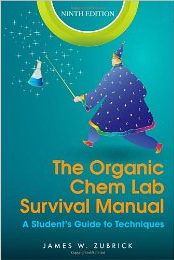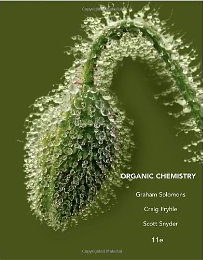TEXTS


1. Organic Chemistry, 11th ed., Graham Solomons & Craig Fryhle
2. The Organic Chem Lab Survival Manual, 9th ed., Zubrick
(Recommended) Study Guide to Organic Chemistry, 11th ed., Solomons & Fryhle
ADDITIONAL MATERIALS
1. Bound notebook for laboratory
2. Safety goggles as required by Department
3. Protective gloves
(Recommended) Darling Flexible Stereochemical Models
COURSE STRUCTURE
Daily effort through reading and problem solving is essential to success in this course. Specific assignments following the enclosed Class Schedule will be given daily. It is expected that the assignment will be completed before the next lecture. Homework will not be collected; however, in order to provide continuing motivation, each lecture will begin with a brief quiz based upon the previous assignment. Self-evaluation of homework will be possible through the use of the Study Guide.
CRITERIA FOR EVALUATION
Two Opportunities will be offered on the dates listed in the enclosed Class Schedule. Opportunity #2 is the American Chemical Society's examination for Organic Chemistry. Students who perform at the 90th percentile or higher on this exam will receive an automatic grade of A for the course, provided all laboratory work is completed. A 164-page study guide for this exam is available for purchase online.
Two low quiz scores will be dropped when computing the final quiz grade. Make-up quizzes are not available.
Laboratories during the second semester build from the techniques practiced during the first semester. Specifically, students should be familiar with the use of ground glass chemical apparatus, infrared spectroscopy, melting point determination, recrystallization, vacuum filtration, distillation (several types), extraction, drying, and evaporation.
Laboratory grading is partially subjective; you will be evaluated on your general preparedness and effort.
Additionally, during the last laboratory session, a laboratory exam will be administered. Details will be provided
in the laboratory syllabus on the first evening of lab. The lab grade will be determined as follows:
33% - Professor's evaluation
33% - Pre-laboratory quiz
33% - Laboratory examination
Overall grades will be computed as follows:
40% - Opportunity #1 and #2
35% - Quizzes (drop 2 low scores)
25% - Laboratory
Both lecture and laboratory must have passing grades in order for a passing grade in the course.
Please note: The summer course in organic chemistry is an accelerated class which covers the
same material as the normal fall/spring curriculum. Between lecture, laboratory, reading and homework problems
you should plan to spend about 20 hours per week working on this class. Past experience shows that students
who have large time commitments outside this class often perform very poorly. If you are not able to make this
significant time commitment your final result is likely to be very poor. Please make time to allow for success.
For each date below, the assigned reading should be read before coming to class on that day. Occasionally we will spend more (or less) time on a topic than indicated below. Accordingly, variations in the reading schedule may occur as announced in class.
Note: The syllabus for laboratory will be distributed during the first laboratory session. Come equipped with lab notebook, goggles and proper laboratory attire.
Date Reading assignment Topic
June 23 chap. 11 skip sections: Alcohols and Ethers
11.11CDE, 11.16
Homework:
1. Quickstart review of reactions
2. Textbook practice problems:
11.2, 11.3, 11.5, 11.6, 11.9,
11.12, 11.16, 11.18, 11.26ade,
11.33, 11.34 (skip GHI), 11.37
3. READ AHEAD (important!) - Chapter 12.1-12.8
June 24 No meeting today - Work on Quickstart